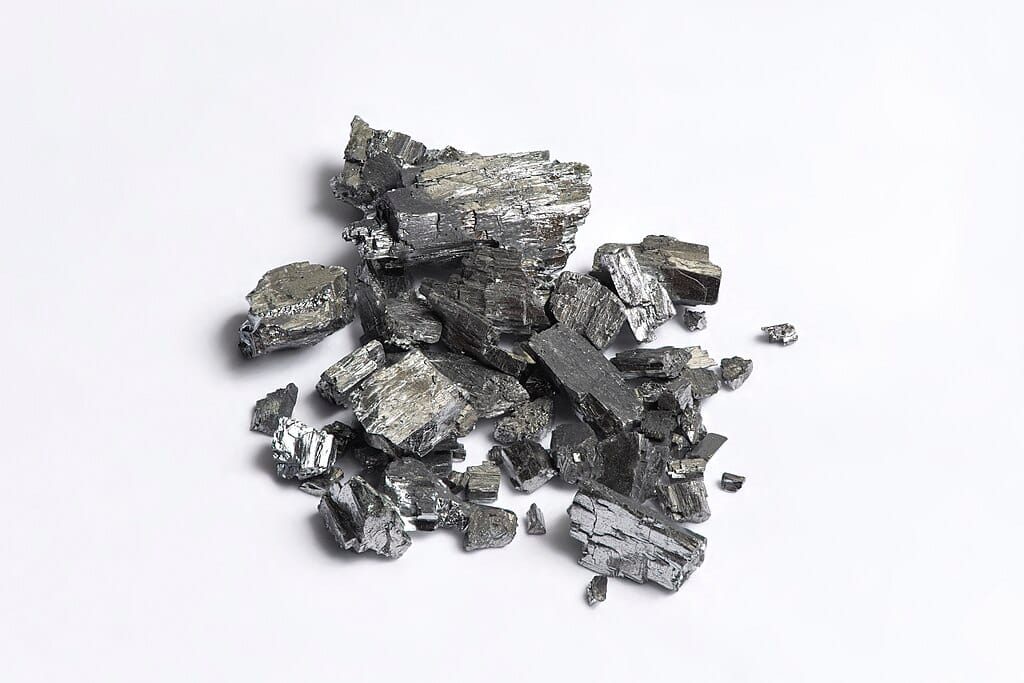tellurium

Tellurium is a chemical element with atomic number 52 and the symbol Te. It is a brittle, silver-white metalloid. It is rather rare on earth, but more abundant in the cosmos as a whole. Tellurium is chiefly used in copper and steel alloys to improve machineability and in solar panels and thermoelectric devices. The name was coined in German from the Latin tellus (earth).
The metal we now call tellurium was first discovered and described in 1782 by minerologist Franz-Joseph Müller von Reichenstein, but he was unable to fully identify it, at first confusing it with antimony before deciding that it wasn’t that metal. He gave it the labels auram paradoxum (paradoxical gold), metallum problematicum (problem metal), and aurum album (white gold). In 1798, after being reminded of von Reichenstein’s discovery, chemist Martin Klaproth successfully isolated the metal, gave credit to von Reichenstein for its discovery, and named it tellurium:
Und welchem ich hiermit den, von der alten Muttererde entlehnten, Namen Tellurium beylege.
(And to which I hereby give the name tellurium, taken from the ancient Mother Earth.)
Klaproth had previously discovered uranium, which he had named after the recently discovered planet Uranus, and his naming this metal tellurium may have been inspired by another planetary namesake.
Sources:
Klaproth, M. H. “Ueber die siebenbürgischen Golderze, und das in selbigen enthaltene neue Metall.” Chemische Annalen Fur Die Freunde Der Naturlehre Arzneygelahrtheit, Haushaltungskunst Und Manufacturen, vol. 1, 1798, 91–104 at 100. Google Books.
Miśkowiec, Pawel. “Name Game: The Naming History of the Chemical Elements—Part 1—From Antiquity till the End of 18th Century.” Foundations of Chemistry. 1 November 2022. DOI: 10.1007/s10698-022-09448-5.
Oxford English Dictionary, third edition, September 2015, s.v. tellurium, n.
Weeks, Mary Elvira. “The Discovery of the Elements. IV. Tellurium and Selenium.” Journal of Chemical Education, 9.3, March 1932, 474–485. DOI: 10.1021/ed009p474.
Photo credit: Jan Anskeit, 2019. Wikimedia Commons. Licensed under a Creative Commons Attribution-Share Alike 4.0 International license.